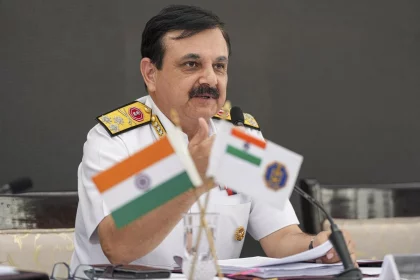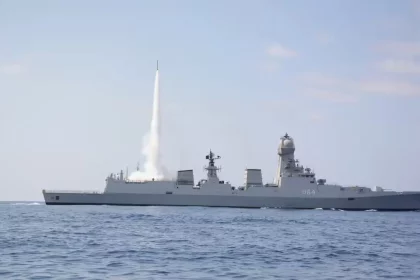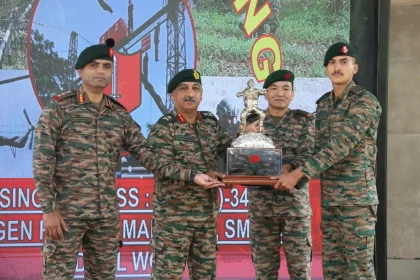Indian Navy Intensifies Surveillance of Chinese Movements in Indian Ocean Region, Confirms Vice Admiral Vatsayan
Vice Admiral Sanjay Vatsayan says the Indian Navy is closely tracking all Chinese vessels in the Indian Ocean amid rising…
India Set to Approve $3.7 Billion Deal for Indo-Israeli MR-SAM Air Defence Missiles
New Delhi to clear $3.7 billion MR-SAM deal with Israel, boosting India’s air defence and Make in India initiative.
Vice Admiral Sameer Saxena Assumes Command as Flag Officer Commanding-in-Chief, Southern Naval Command
As the new Flag Officer Commanding-in-Chief, Southern Naval Command, Vice Admiral Saxena is poised to lead the Navy’s premier training…
Young Leaders Forum Engages Youth on ‘The Future of Defence: Youth at the Heart of National Security’
The Young Leaders Forum reaffirmed the message that the youth of today form the backbone of India’s secure and self-reliant…
Sepoy Rajendar Singh Khati of 22 KUMAON Named Best Student as Commando Course Concludes at Junior Leaders Wing, Belagavi
The ceremony reaffirmed the Junior Leaders Wing’s pivotal role in shaping future military leaders and strengthening the bond between India…
Vice Admiral Sanjay Bhalla Assumes Command of Eastern Naval Command at Visakhapatnam
As the new FOC-in-C of the Eastern Naval Command, Vice Admiral Bhalla will lead one of the Indian Navy’s most…






